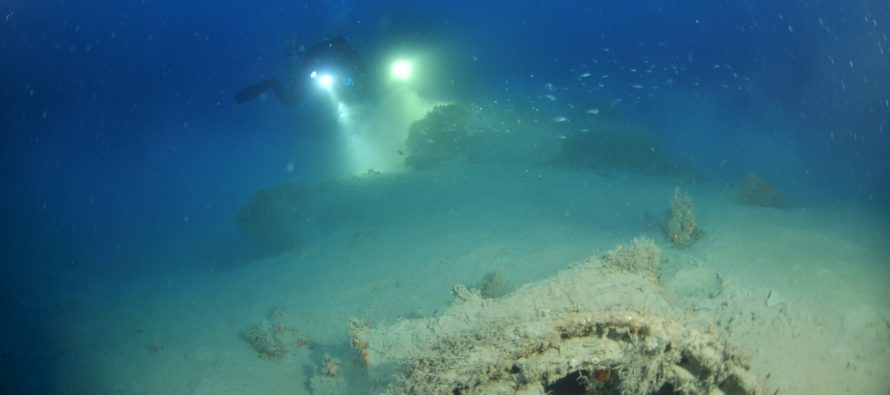WWI Austro-Hungarian submarine discovered in southern Albania waters

Story Highlights
- The Austro-Hungarian submarine, lying at a depth of 60 meters, was discovered by a Czech diving team of technical divers, historians and documentarians in their second Albania expedition conducted in late September
Related Articles
TIRANA, Oct. 19 - Czech divers have discovered the wreck of an Austro-Hungarian submarine destroyed in southern Albania during World War I.
“Austro-Hungarian submarine U16 was destroyed on October 16, 1916, most probably after the collision with the Italian torpedo boat Nembo. After that, the submarine was deliberately crashed by the Italian steamer Bormida,” the Czech embassy in Tirana said in a statement.
The discovery has taken place close to the coast of Karaburun peninsula, southern Albania where the Adriatic meets the Ionian Sea.
The tiny now uninhabited 5.7 km2 island of Sazan, a military base which has been open to tourists since last May, and the Karaburun peninsula, form the first and only national marine park of Albania.
The marine park features ruins of sunken Greek, Roman and World War II ships, rich underwater fauna, steep cliffs and giant caves, ancient inscriptions of sailors on shore, secluded beaches, and breathtaking views of the coastline.
The Austro-Hungarian submarine, lying at a depth of 60 meters, was discovered by a Czech diving team of technical divers, historians and documentarians in their second Albania expedition conducted in late September.
The team said there is proof the submarine was built in 1915 and designed to protect the borders of the Austro-Hungarian Empire, as well as to attack vessels of their enemy.
During their first two Albania expeditions, the Czech Diving Team also documented in detail the wreck of Italian ship Regina Margherita as well as two Austro-Hungarian ships, S/S Linz and S/S Wien.
The Albania discovery came as part of a number of expeditions the Czech Diving Team has carried out dealing with sunken vessels associated with the history of the Czech Republic, part of the former Austro-Hungarian empire.
More and more Czech tourists, known for their passion for Albanian mountains and adventure tourism, have been visiting Albania in the past few years, with regular direct flights linking Prague to Tirana offered during the summer tourist season.
Some 14,000 Czech tourists visited Albania in 2016, a majority of whom on Travel Service, the largest Czech carrier.
The submarine discovery comes few days after another Austro-Hungarian steamship came to light at the Shkodra Lake in northern Albania.
The drastic decline in water levels at the Shkodra Lake, northern Albania, following one of the worst droughts in decades brought to light in early September 2017 a 19th century Austro-Hungarian steamship which is believed to have sunken in Shiroka, a tourist lake village just outside Shkodra.
The military vessel, known by local residents as the Austrian ship, is a steamboat measuring 20 meters long and 4 meters wide, bearing testimony to Shkodra Lake waters having been navigable by early 20th century when water levels are estimated to have been much higher.
The discovered ships are also testimony to Albania’s traditional relations with former Austria-Hungary and Austria, one of the key allies of Albania from the country’s independence to present-day support for Euro-Atlantic integration.
This is not the first time shipwrecks and other underwater items dating back from ancient times to World War II have been discovered in Albanian waters.
Scanning the southern Albanian waters along the Riviera coastline, a U.S.-Albanian expedition has discovered numerous amphoras and artefacts including ancient Greek, Roman, medial and modern finds during the past decade. Dozens of wreck sites including warships and armoured vehicles have also been discovered.




